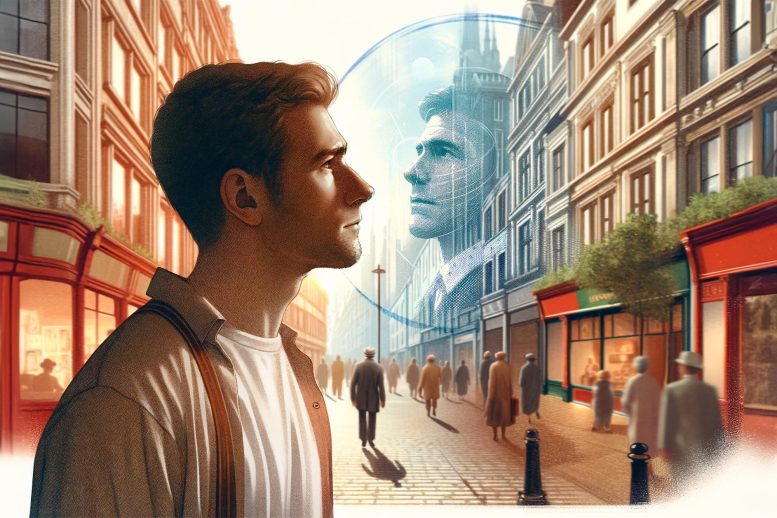
Déjà vu, a sensation where individuals feel as though they’re reliving an experience, has been a subject of intrigue for many. Recent scientific research suggests this phenomenon can be triggered by spatial similarities between a new scene and an unrecalled memory. Various studies, including those using virtual reality, aim to uncover more about the causes of déjà vu. Credit: SciTechDaily.com
What is déjà vu? Psychologists are exploring this creepy feeling of having already lived through an experience before.
Have you ever had that weird feeling that you’ve experienced the same exact situation before, even though that’s impossible? Sometimes it can even seem like you’re reliving something that already happened. This phenomenon, known as déjà vu, has puzzled philosophers, neurologists, and writers for a very long time.
Starting in the late 1800s, many theories began to emerge regarding what might cause déjà vu, which means “already seen” in French. People thought maybe it stemmed from mental dysfunction or perhaps a type of brain problem. Or maybe it was a temporary hiccup in the otherwise normal operation of human memory. However, the topic did not reach the realm of science until quite recently.
Moving From the Paranormal to the Scientific
Early in this millennium, a scientist named Alan Brown decided to conduct a review of everything researchers had written about déjà vu until that point. Much of what he could find had a paranormal flavor, having to do with the supernatural – things like past lives or psychic abilities. But he also found studies that surveyed regular people about their déjà vu experiences. From all these papers, Brown was able to glean some basic findings on the déjà vu phenomenon.
For example, Brown determined that roughly two-thirds of people experience déjà vu at some point in their lives. He determined that the most common trigger of déjà vu is a scene or place, and the next most common trigger is a conversation. He also reported on hints throughout a century or so of medical literature of a possible association between déjà vu and some types of seizure activity in the brain.
Brown’s review brought the topic of déjà vu into the realm of more mainstream science, because it appeared in both a scientific journal that scientists who study cognition tend to read, and also in a book aimed at scientists. His work served as a catalyst for scientists to design experiments to investigate déjà vu.
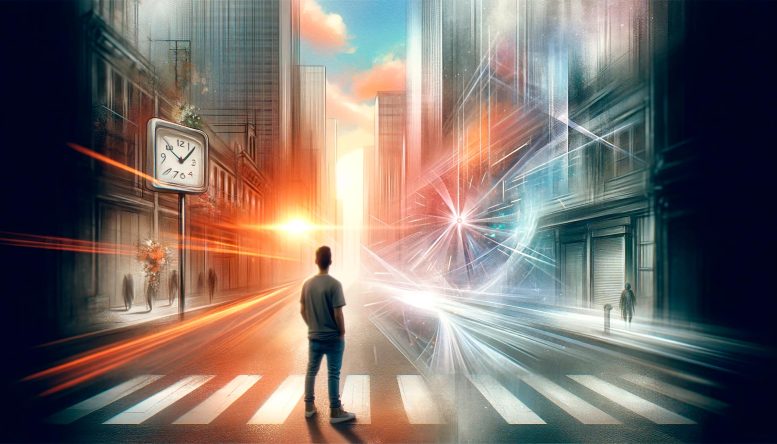
Maybe the layout of a new place is very similar to somewhere else you’ve been, but that you aren’t consciously remembering. Credit: SciTechDaily.com
Testing Déjà Vu in the Psychology Lab
Prompted by Brown’s work, my own research team began conducting experiments aimed at testing hypotheses about possible mechanisms of déjà vu. We investigated a near century-old hypothesis that suggested déjà vu can happen when there’s a spatial resemblance between a current scene and an unrecalled scene in your memory. Psychologists called this the Gestalt familiarity hypothesis.
For example, imagine you’re passing the nursing station in a hospital unit on your way to visit a sick friend. Although you’ve never been to this hospital before, you are struck with a feeling that you have. The underlying cause for this experience of déjà vu could be that the layout of the scene, including the placement of the furniture and the particular objects within the space, have the same layout as a different scene that you did experience in the past.
Maybe the way the nursing station is situated – the furniture, the items on the counter, the way it connects to the corners of the hallway – is the same as how a set of welcome tables was arranged relative to signs and furniture in a hallway at the entrance to a school event you attended a year earlier. According to the Gestalt familiarity hypothesis, if that previous situation with a similar layout to the current one doesn’t come to mind, you might be left only with a strong feeling of familiarity for the current one.
To investigate this idea in the laboratory, my team used virtual reality to place people within scenes. That way we could manipulate the environments people found themselves in – some scenes shared the same spatial layout while otherwise being distinct. As predicted, déjà vu was more likely to happen when people were in a scene that contained the same spatial arrangement of elements as an earlier scene they viewed but didn’t recall.
This research suggests that one contributing factor to déjà vu can be spatial resemblance of a new scene to one in memory that fails to be consciously called to mind at the moment. However, it does not mean that spatial resemblance is the only cause of déjà vu. Very likely, many factors can contribute to what makes a scene or a situation feel familiar. More research is underway to investigate additional possible factors at play in this mysterious phenomenon.
Written by Anne Cleary, Professor of Cognitive Psychology, Colorado State University.
This article was first published in The Conversation.![]()





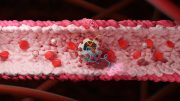
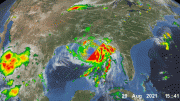
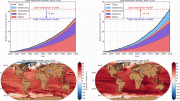

I agree that certain surroundings like buildings, trees, sunset, or music can provide those moments. I, like many have had these revelations, mostly outdoors. no idea about outdoor correlation.
does this study have any reason to check this or is this just a fun fallacy check of human brain. still fun tho!
Considering some of the horrific crimes that psychologists and the like have aloud themselves to be talked into by some very unsavory characters; I would be very cautious about believing anything that they might say about this subject matter. A much more reliable answer can be found by studying the physics of subatomic particles and the brain patterns of hibernating mammals.
Dr. Keith Abercrombie demonstrated in the mid 1990’s that déjà vu is actually the reset of the control program that governs us all. If you don’t know this theory, reality is a gigantic computer simulation that governs the entire Universe. The program can (and does, apparently) glitch from time to time, mostly on the individual level (sentient beings that can detect both consciousness and reality), but sometimes, it can glitch on a far more massive scale (think solar system or even galaxy wide). Science can and does detect these glitches all of the time, but up until now, they have been ascribed to physical phenomena. Even black holes are subject to this, and are thought to be program variables that both draw and (eventually) emit ‘values’ to the overall program, effecting all of reality and even the very fabric of the Universe, which is actually nothing more then what we would call ‘software’. Importantly, the architecture of the software (and the architect) is not thought to be some supreme being, but rather a entire race that has eons ago developed the ability to manipulate our Universe. We have some hints within our reality that this could be true, such as déjà vu experiences of course, but more importantly, the limitations of our physics and how we now know that multidimensions likely do exist.
Sounds like the twice-appearing cat in the first “Matrix” film. How this might have been demonstrated in the mid-90s needs some explanation.